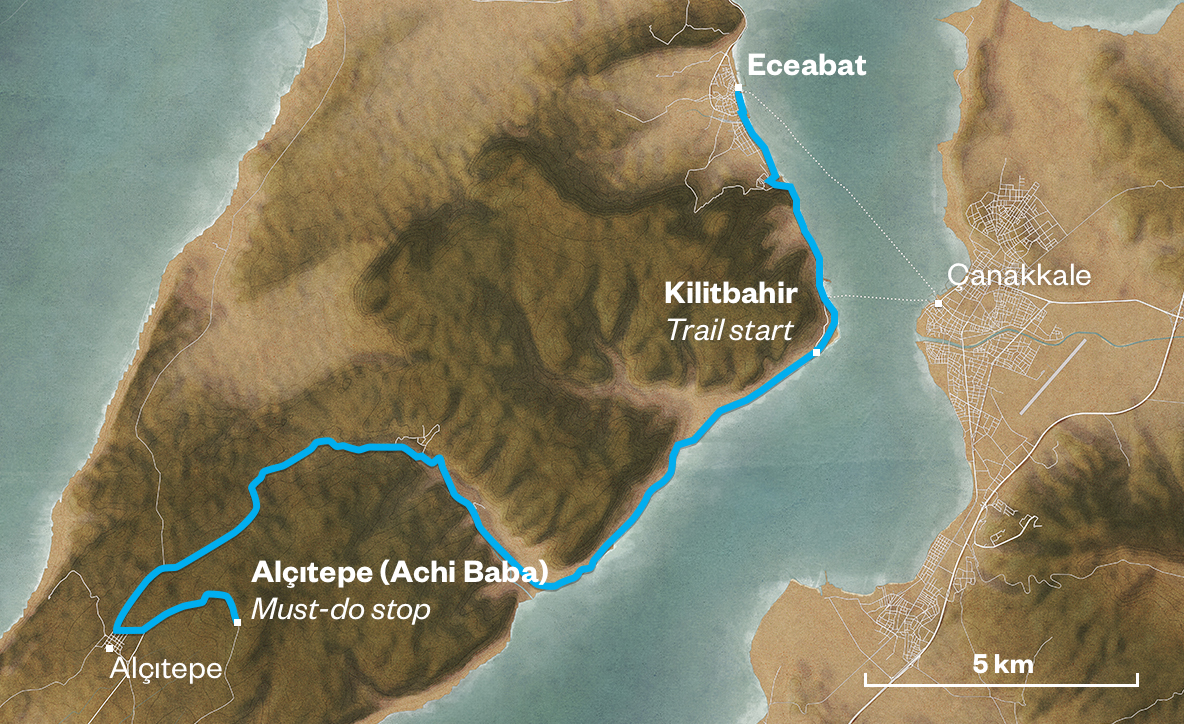
WARNING: Many locations at Gallipoli are potentially dangerous, and there are undercut cliffs and sudden drops. Go slowly and carefully - and never stand close to a cliff's edge.
Get to Kilitbahir (the start of this trail) from Eceabat
From the ferry wharf in Eceabat, turn left and follow the road along the Dardanelles coast 200 metres before it turns right, then take the turn to the left 50 metres on to continue south down the coast. After 4.5 kms you will come to the village of Kilitbahir.
Continue along the coast road, passing the Ottoman era Kilitbahir Castle on the right of the road and then the Turkish artillery position the Namazgah Tabyasi (Namazgah Battery) on the left just after the castle. A further 250 metres along the road, at the edge of the village, a stabilized track opens in front of you on the right. Take this track as it climbs for 75 metres, ending in a car park in the rear of the Mecidiye Tabyasi (Mecidiye Battery). Walk into the battery area and to the large artillery gun.
Your stop
Stand on the seaward side of the cannon looking out over the Dardanelles Strait.
Get to the must-do stop from Eceabat
From the ferry wharf in Eceabat, turn left and follow the road along the Dardanelles coast 200 metres before it turns right, then take the turn to the left 50 metres on to continue south down the coast. After 4.5 kms you will come to the village of Kilitbahir. Continue along the coast road for approximately 5 kms, passing the hamlet of Havuzlar before turning inland. After a further 7 kms you will approach the outskirts of the village of Alçitepe. Just before entering the village there is a road to the left skirting the back of the village. Take this road and follow it for 200 metres, where it forks. Take the left hand road, signposted for the Alçitepe Baki Terasi (Alçitepe Viewing Terrace). Follow this one-way road as it climbs to the east for 2.4 kms, till you come to the viewing terrace on your left.
Your stop
Walk up the steps to the top of the platform. Look out to sea so you can see the four pillars of the Çanakkale Martyrs Memorial on the headland, with a Turkish flag to its left.
No car?
Taxi drivers may take you to the main sites, but this can be expensive. You can also hire a private guide. Group bus tours generally do not cover the area around this trail.
Plan your time
Allow 4 – 5 hours to explore the entire Cape Helles trail.
If you’re short of time, you can simply visit the must-do stop on the trail – Alçi Tepe. The audio guide to Alçi Tepe gives you the big-picture Cape Helles story